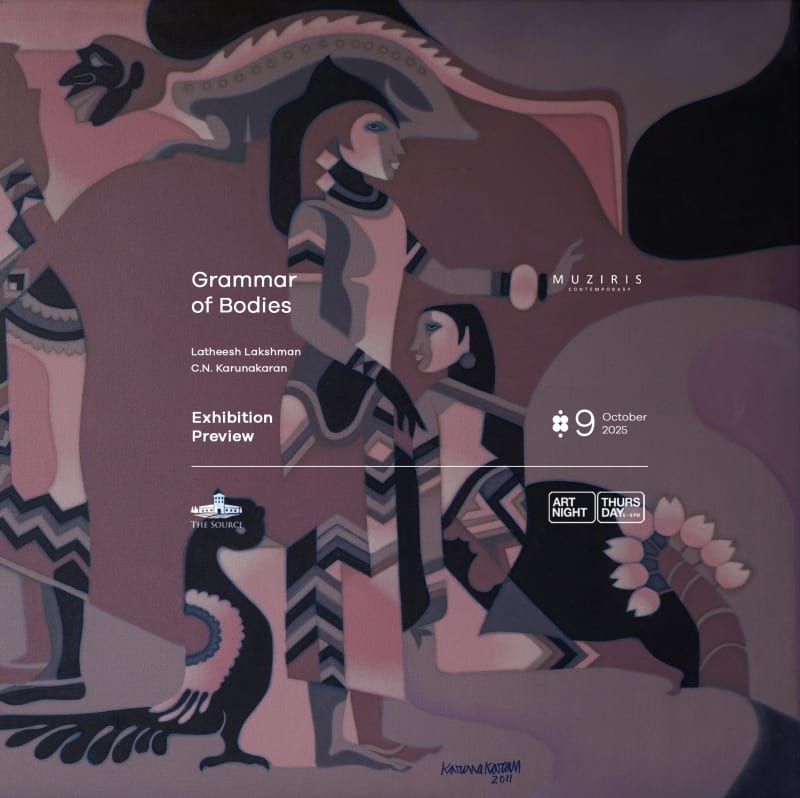By juxtaposing practices of C.N. Karunakaran (1940–2013) and Latheesh Lakshman, we converge on the human body as a primal language—the first mark-making of our species and enduring site of expression. Across generations, Grammar of Bodies stages a dialogue between myth and modernity, ornament and abstraction, fine art and design.
From the ‘Dancing Girl’ of Mohenjo-Daro to today’s experimental canvases, the human body has remained art’s most vital subject; never only anatomical, but a vessel of memory, myth, and meaning. Grammar of Bodies continues this lineage through juxtaposing practices of C.N. Karunakaran (1940–2013) and Latheesh Lakshman.
Karunakaran, a Madras Modernist, drew deeply from Kerala mural traditions and Indian classical aesthetics. His quasi-mythological worlds are suffused with the leela of nature, where man and woman stand as timeless archetypes of love and desire. Figures rendered with flowing lines, frontal poise, and a luminous palette evoke the eternal spring, transforming ornamentation into language and myth into memory.
Lakshman, a contemporary artist and an internationally acclaimed designer who shaped the visual identity of the Kochi-Muziris Biennale, reimagines figuration in bold contours and chromatic spaces. His distilled silhouettes, influenced by design movements like Suprematism and Constructivism, vibrate with immediacy yet retain a timeless stillness. The ornamental precision of his practice echoes his lineage in a community of goldsmiths.
Together, their works converge on the human body as a primal language—the first mark-making of our species and enduring site of expression. Across generations, Grammar of Bodies stages a dialogue between myth and modernity, ornament and abstraction, fine art and design.


